How to Visit a Doctor in Zhangjiajie-A Step by Ste
Why Visit Tianjin
Just a short high-speed train ride from Beijing, Tianjin offers a charming blend of Chinese tradition and European-style architecture. Once a key trading port with multiple foreign concessions, the city today is known for its riverfront skyline, colonial-era streets, and warm, humorous local culture. Visitors come for its laid-back vibe, scenic Haihe River walks, iconic Tianjin Eye Ferris wheel, and culinary highlights like jianbing pancakes, sugar-free roast duck, and famed old-brand pastries. Unlike Beijing’s fast pace, Tianjin feels more leisurely, making it a favorite weekend escape for both locals and travelers.
Best Travel Route Overview
Day 1: Evening arrival, check-in and rest near the city center. Day 2: Morning breakfast in Xibeijiao → Wudadao Historical Area → Taian Dao & Jiefang North Road Architecture → Jiefang & Beian Bridges → Italian Style Town and Haihe Riverfront → Evening drinks by the river. Day 3: Morning Xiangsheng performance → Lunch at classic Tianjin restaurant → Departure.
Detailed Itinerary
Day 1: Arrival and Check-in
-
Getting There: High-speed trains run frequently between Beijing South Railway Station and Tianjin (e.g., G446, 18:46–22:38). Flights like Xiamen Airlines MF8191 (20:50–22:55) also connect the two cities.
-
Where to Stay:
-
Courtyard by Marriott Tianjin Lujiazui: Spacious 45m² rooms, quiet setting, and walking distance to the breakfast hub Xibeijiao.
-
Atour Hotel (Wudadao or Tianjin Eye branches): Stylish boutique hotels close to key attractions and the Haihe River.
-
-
Pro Tip: Arriving late? Skip sightseeing. Settle in, get a good night’s sleep, and be ready for a full day of exploration.
Day 2: Classic Tianjin Highlights
Morning: Traditional Xibeijiao Breakfast (Before 8 AM)
Breakfast is a cultural ritual in Tianjin. Arrive early—queues form quickly.
Mu Ji Jianbing Guozi: A crispy pancake wrap with egg, crunchy dough sticks, and flavorful sauces.
Zhengweizhai Guoba Cai: Tianjin’s comfort food—crispy rice crusts served in a rich gravy.
Chenmeizhai Doujiang: Smoky, roasted soy milk paired with sesame paste noodles; a local favorite.
Ergu Baozi: Juicy pork buns with a delicate, thin skin.
Gao Gan Wang: Sweet steamed cakes; perfect for take-home souvenirs.
Optional Stops: Namlou Jianbing (branches across the city) and Erduoyan Zhagao for famous fried rice cakes.
Experience: Breakfast stalls buzz with lively chatter, offering a slice of Tianjin’s morning rhythm.
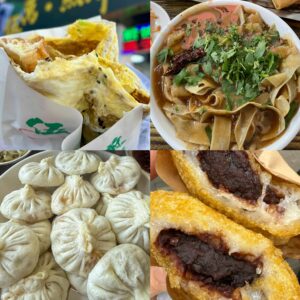
Late Morning: Wudadao Historical Area (11:00–15:00)
Explore a district once home to foreign expatriates, filled with tree-lined streets and early 20th-century villas.
Must-Sees: Minyuan Square, Sanchou Bookstore, and the boutique Inside Art Shop.
Cultural Stop: Angelee Church (advance booking required), with its Gothic façade.
Local Vibe: Grab an ice cream from popular parlors like Ruyi Fu while strolling.
Lunch: Taiyufeng Sugar-Free Roast Duck (Yongan Road branch; closes at 2 PM). The succulent duck, paired with sesame-sauce pancakes, offers a lighter alternative to Beijing’s iconic roast duck.
Photography Tip: Wudadao’s varied architectural styles—from Renaissance to Art Deco—are best captured around midday when the light filters through plane trees.
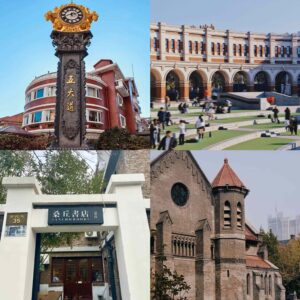
Afternoon: Architectural Gems of Taian Dao and Jiefang Road (15:15–17:00)
Taian Dao: A showcase of stately consulate buildings and restored heritage hotels like Lisun Hotel, where history meets luxury.
Jiefang North Road: Known as “Financial Street,” this corridor of early 20th-century banks and offices offers excellent river views.
Bridges: Walk or cycle across Jiefang and Beian Bridges for panoramic photos of the Haihe River, especially as golden hour approaches.
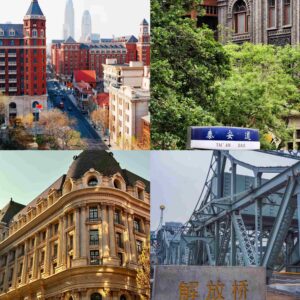
Evening: Italian Style Town and Haihe Riverfront (17:00–19:00)
Stroll & Explore: Wander through cobblestone streets reminiscent of a small European town, with cafés and boutiques in historic buildings.
Activities: Take a double-decker bus or enjoy a Haihe River ferry ride to the illuminated Tianjin Eye Ferris wheel.
Dinner Choices:
Osteria Italian Restaurant (86 Chifeng Road): Authentic Italian cuisine in a charming courtyard.
Alternatively, sample Tianjin’s street snacks, from sesame pancakes to sugar-coated hawthorns.
Nightlife: Enjoy creative cocktails at BEESBAR near Tianjin Eye or Run Bar near Wudadao, popular for their relaxed yet trendy atmosphere.
Experience: As the sun sets, the Haihe River lights up, and Tianjin’s skyline offers a picture-perfect evening backdrop.
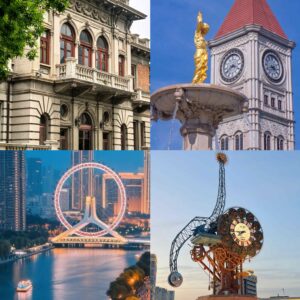
Day 3: Cultural Farewell
Morning: Xiangsheng at Mingliu Teahouse (11:00–12:30)
Immerse yourself in Tianjin’s signature comedic art form—Xiangsheng, or crosstalk. Expect quick-witted dialogues, puns, and playful humor that reveal the city’s character.
Experience Tip: Even if you don’t fully understand Mandarin, the energy, gestures, and audience laughter make for an engaging cultural encounter.
Lunch: Traditional Tianjin Fare (13:00–14:00)
Dine at Lideshun Xiaolao Fanzhuang, famed for:
Guota Sanyang: A crispy, pan-fried trio of seafood and meats.
Niuwogu: A hearty beef bone stew, perfect for sharing.
Shuibao Du: Tender tripe stir-fried at high heat, a Tianjin specialty.
Pro Tip: Portions are generous—order family-style for variety.
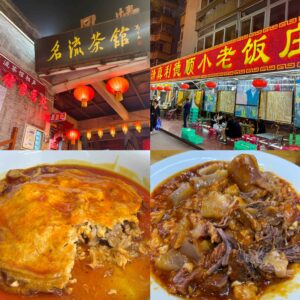
Departure
Retrieve your luggage and make your way to the station or airport. High-speed trains to Beijing run every 10–15 minutes in the afternoon.
Traveler Tips
Practical Information
-
Language: English is limited. Download a translation app like Pleco or set up WeChat Translate. Carry your hotel address in Chinese characters for taxis.
-
Transport: Ride-hailing apps such as Didi are reliable. High-speed rail between Beijing and Tianjin is fast and efficient—reserve tickets early on weekends.
-
Connectivity: Mobile coverage is strong in most areas but may drop inside older buildings; download offline maps.
Cultural Etiquette
-
Respect Local Customs: Speak softly in religious and historical sites. Always ask permission before photographing people.
-
Dress Appropriately: Smart-casual attire suits Tianjin’s café districts; modest clothing for church visits.
Weather & Packing
-
Best Time to Visit: Spring (April–May) and autumn (September–October) have mild weather and colorful scenery.
-
Essentials: Sunscreen, a reusable water bottle, and a light jacket for sudden temperature drops. An umbrella is useful for unexpected showers.
Safety & Booking
-
Reservations: Book crosstalk shows, church visits, and river cruises in advance, especially on weekends.
-
Payments: Cashless payments via WeChat Pay or Alipay dominate; carry some RMB for markets and small eateries.
-
Health & Comfort: Pack a small first-aid kit and hand sanitizer. Public restrooms may not always provide tissue paper—bring your own.
-
Navigation: Offline maps and translation apps are essential. Taxi drivers may not speak English; showing your destination in Chinese helps.
